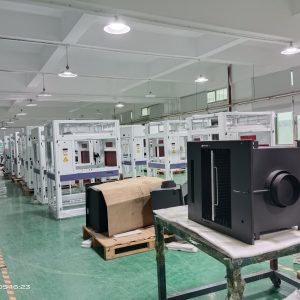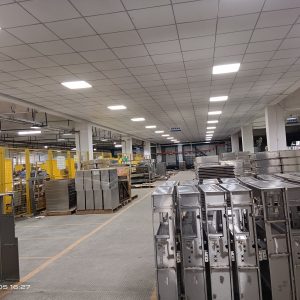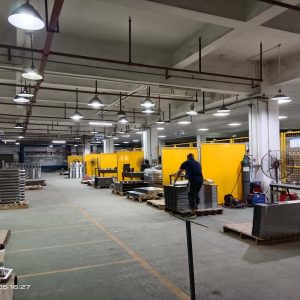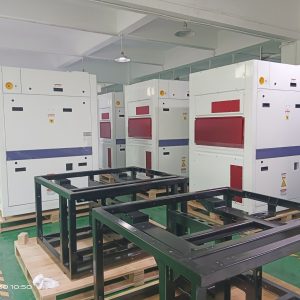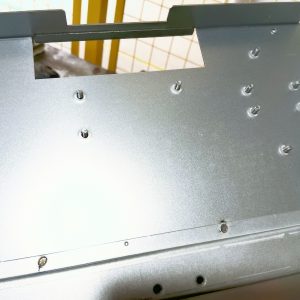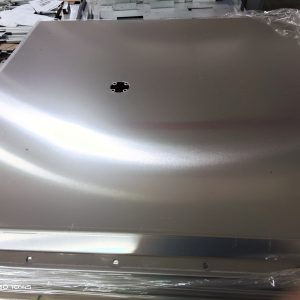Laser cutting is a precise and versatile method used for cutting sheet metal. The maximum thickness that can be cut depends on several factors, including the type of metal, the laser’s power, and the quality of the cut required. Here are some general guidelines for laser cutting thickness:
Laser Types and Thickness Capabilities
- CO2 Lasers:
- Mild Steel: Typically up to 25 mm (1 inch).
- Stainless Steel: Up to 20 mm (0.79 inches).
- Aluminum: Up to 15 mm (0.59 inches).
- Fiber Lasers:
- Mild Steel: Up to 30 mm (1.18 inches).
- Stainless Steel: Up to 25 mm (0.98 inches).
- Aluminum: Up to 20 mm (0.79 inches).
- Nd
Lasers:
- Generally used for precision cutting and typically handle thinner materials than CO2 or fiber lasers.
Factors Affecting Cutting Thickness
- Laser Power: Higher wattage lasers can cut through thicker materials. For example, a 10 kW fiber laser can cut thicker materials compared to a 2 kW laser.
- Material Type: Different metals have varying properties that affect how they interact with laser cutting:
- Mild Steel: Easier to cut due to lower reflectivity and higher absorption of laser energy.
- Stainless Steel: Requires more power due to higher reflectivity.
- Aluminum: Highly reflective and conductive, requiring more laser power and possibly specialized equipment.
- Cut Quality Requirements: Thicker materials can be cut, but the edge quality may degrade. For high-quality cuts, the maximum thickness might be lower.
- Assist Gas: The type and pressure of assist gas (such as oxygen, nitrogen, or air) can influence the cutting process and quality. For example, oxygen can increase cutting speed but may cause oxidation, while nitrogen provides a cleaner cut.
Typical Maximum Thickness by Laser Power
- 2 kW Laser:
- Mild Steel: Up to 15 mm (0.59 inches).
- Stainless Steel: Up to 8 mm (0.31 inches).
- Aluminum: Up to 6 mm (0.24 inches).
- 4 kW Laser:
- Mild Steel: Up to 20 mm (0.79 inches).
- Stainless Steel: Up to 12 mm (0.47 inches).
- Aluminum: Up to 10 mm (0.39 inches).
- 6 kW Laser:
- Mild Steel: Up to 25 mm (0.98 inches).
- Stainless Steel: Up to 16 mm (0.63 inches).
- Aluminum: Up to 12 mm (0.47 inches).
- 10 kW Laser:
- Mild Steel: Up to 30 mm (1.18 inches).
- Stainless Steel: Up to 25 mm (0.98 inches).
- Aluminum: Up to 20 mm (0.79 inches).
These are general guidelines, and specific capabilities can vary depending on the laser cutting machine and setup. It’s always best to consult with the laser cutting service provider to determine the exact capabilities for your specific material and thickness requirements.
china sheet metal fabrication manufacturers
sheet metal fabrication company china
china sheet metal fabrication companies
china sheet metal forming manufacturers
china sheet metal fabrication parts factory
china sheet metal fabrication parts manufacturer
china sheet metal fabrication factory
sheet metal parts manufacturing china
china metal enclosure manufacturers
china sheet metal fabrication supplier
china sheet metal fabrication services
china precision sheet metal fabricators
china custom sheet metal parts
china aluminum sheet metal fabrication manufacturers
china sheet metal parts company
china precision sheet metal manufacturer
china sheet metal enclosure fabrication
china sheet metal parts manufacturers
china metal stamping parts manufacturer
